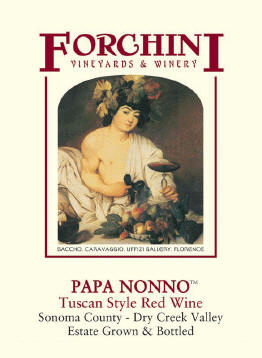 |
|
Wine Details
Price:
$17.00 per bottle
Description:
A unique blend of red varietal grapes fermented together with a small amount of white to produce a dry full bodied wine in a style similar to the Chianti wines of Tuscany. The backbone of the wine is 74% Zinfandel with 12% Carignane, 5% Cabernet and 9% mixed white. With the exception of the Cabernet, the vines used in this production are 50-90 years old. The co-fermentations provides a certain complexity not normally obtained by post fermentation blending. Aged 19 months in oak. Bright fruit flavors of berry, plum and cherry combines with moderate tannin and acidity for a balanced mouthfeel. A delicious wine, easy to drink that pairs well with a variety of foods.
|
|
|